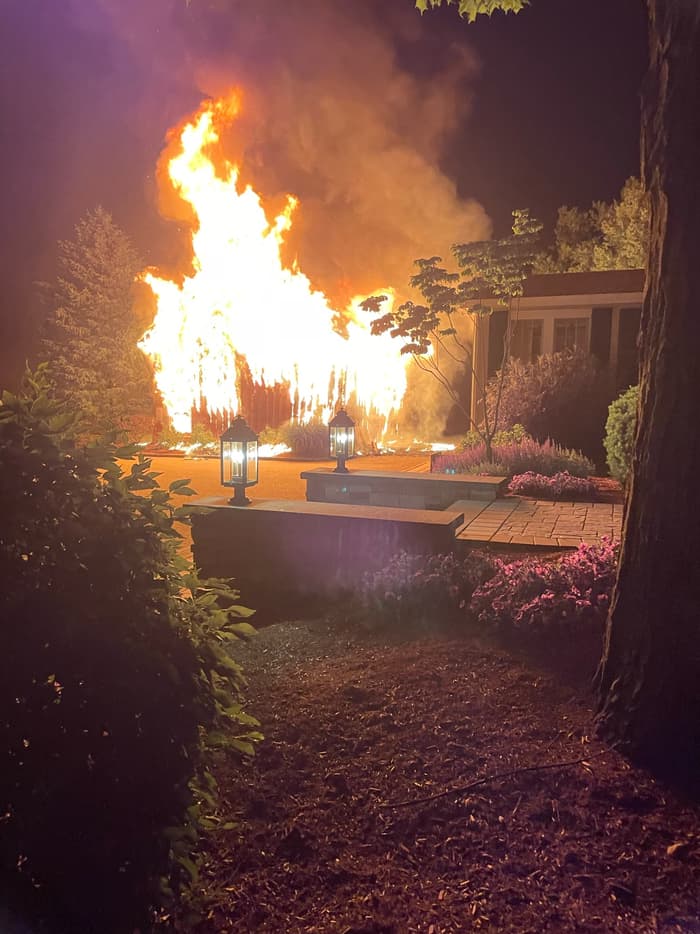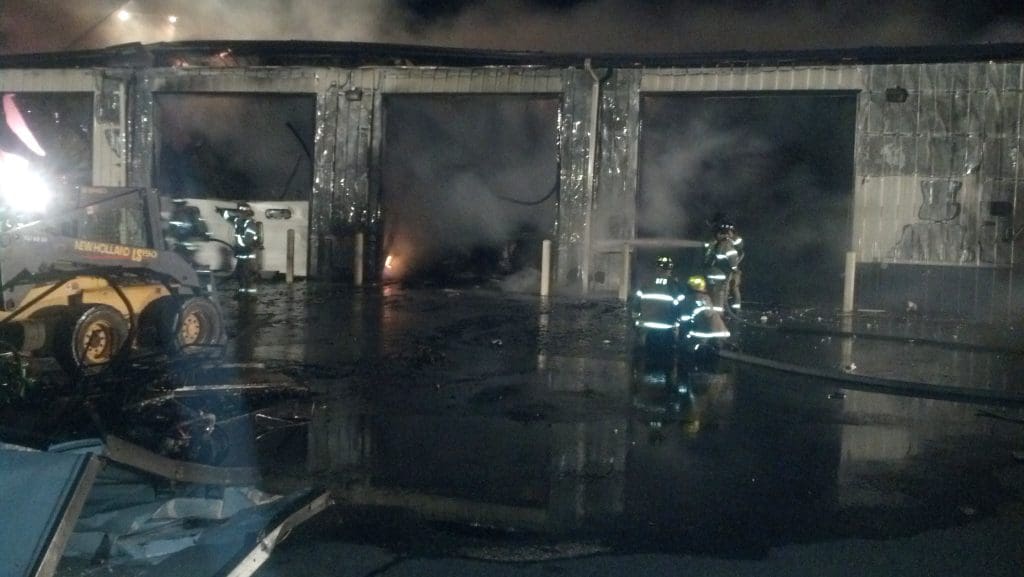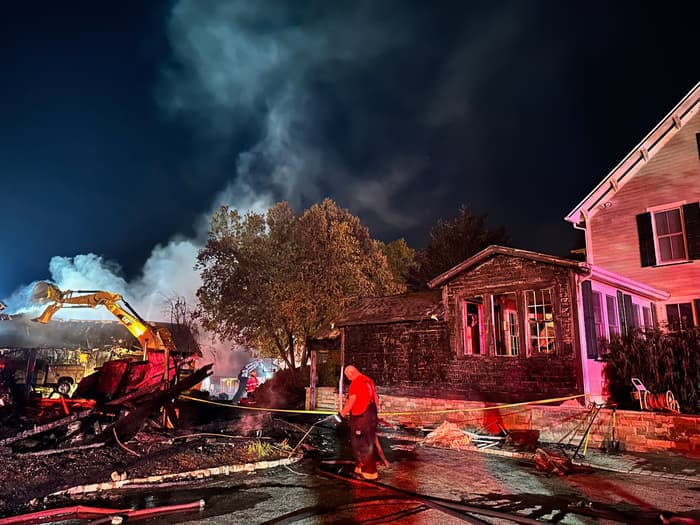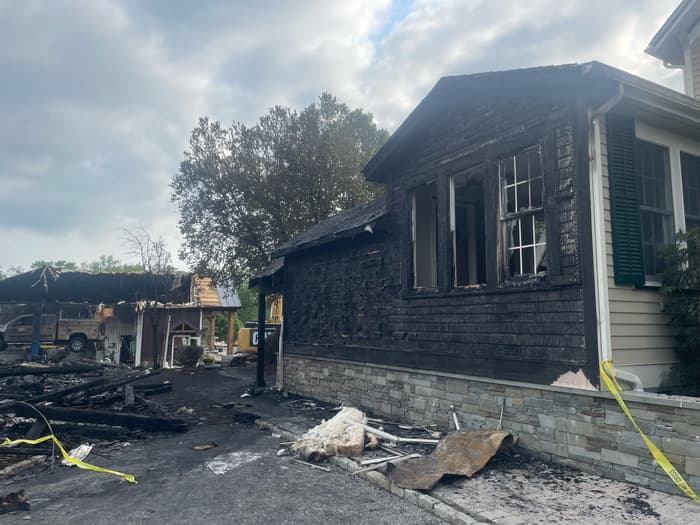
‘That’ll never happen to me’ can be a common thought as you hear stories of disasters taking place. However, the truth is many incidents happen when people least expect it.
While most misfortunes are unforeseen and there’s little that could be done to prevent them from occurring, how you respond to these types of emergencies can make a huge difference in whether your landscape company will be able to open its doors again.
Responding to Disaster
Scott’s Landscaping, based in Centre Hall, Pennsylvania, dealt with a fire at their facility on Sunday, Nov. 10, 2013. Their smoke and heat detectors triggered a call from their security provider and Scott Burk, president of Scott’s Landscaping, had them call the fire department.
“Our incident was caused by some type of power surge,” he says. “It was a very windy day and power lines got crossed and it blew out the main transformer servicing our facility. When the power was reenergized, the surge damaged wiring inside our building and started the fire.”
This freak accident resulted in a fire that burned for six hours, and the company lost their entire shop, office building and 95% of all the contents. Burk says the damage was over $3 million.

He called their IT company at 3 a.m. to implement a recovery strategy for their data. The servers were still operating during the fire and the IT company was able to preserve critical files, including customer data and payroll information.
Farmside Landscape & Design, based in Sussex, New Jersey, endured a fire at their headquarters on Friday, June 2, 2023. Richard Kuperus, the company’s plant health specialist, snow operations coordinator and hiring manager, was at the house when he heard a pop and a crackling sound. He saw flames coming out from the 1884 barn on the property.
He called 911 immediately and worked to move a lot of the trucks and trailers away from the business buildings. The first fire truck arrived three and a half minutes later and ultimately, about 15 different fire departments were on the property fighting the blaze.
Farmside’s shop, office building, garage and some of the personal residence were fully or partially damaged, requiring reconstruction and rebuilding.
“Our entire shop operation was completely destroyed,” says Miles Kuperus, Jr., founder and CEO of Farmside Landscape & Design. “Our mechanic was totally suspended from any kind of operations. Our office was 100% wiped out. Our administration was totally gone.”
Recovery
Despite the devastating fires, both companies were able to be up and running within 48 hours after the incidents. Scott’s Landscaping sent out three crews less than 24 hours after the fire as their trucks and job trailers were not in the building affected.
“Having our trucks and job trailers outside the building and far enough away from our building, we were able to keep working,” Burk says. “This was not a planned strategy, but after the fire we were grateful to have most of our equipment to keep working.”

By the end of the week, Scott’s Landscaping was fully operational. They worked out of temporary office pods and limited shop space for a year and a half.
On Saturday morning following the fire, Farmside contacted their staff and let them know they would be working on Monday because some were wondering if they still had a job. They also sent out communications to their customers that day as well. They shared the story about what had happened on their company website so they could direct people there and answer all their questions.
By Monday morning, Farmside had temporary power restored with their generators. They were able to get their communications up on Wednesday and the temporary offices were there within the week.
“We rented that from United Rentals for our production teams,” Kuperus says. “They were able to get two trailer boxes and we got them furnished and that worked out perfect.”
Kuperus says their insurance company came through and they had funds within a day or two. Their community and fellow landscape contractors wanted to support them, but there wasn’t much they could do to help Farmside. Kuperus says it was their vendors who were able to assist and get them equipment by Monday. All of their fleet was going to be sharpened on Saturday, so they lost a number of their mowers.
Farmside has yet to fully recover from their fire earlier this year. Burk says it took them several years to recover completely from their incident.
“We had a new building built in 16 months, but it was years later until we had all our contents and shop inventory back up to pre-fire status,” Burk says.
Burk’s company was in growth mode, so they had to rebuild with insurance proceeds and take on additional debt in order to get back on their feet.
Lessons Learned
Kuperus says that his strong business relationships have been key to being able to move forward quickly. He says his first call was to a friend of his who is a fire chief. His second call was to an excavator who is also in the fire department.

“I told him to get his excavators down there on site and then do what he had to manage the fire and I gave him permission to knock buildings down if he needed to stop the fire,” Kuperus says.
Kuperus encourages others to think through who their top five calls would be in the case of a calamity like this. He says you should also make sure you have good point people who can run expanded projects above their pay grade. You need to know who’s going to take charge of certain areas and what the protocol is for events like this.
Kuperus says they hired Katie Kuperus, a consultant with Cultiveren, to manage the fire recovery aspect of the business and interface with their contractors, insurance company and the bank.
“We do feel that that needs to be farmed out in order for your staff to stay focused on your daily operations,” he says.
It’s also important to know what key pieces of equipment and tools you need to continue with your day-to-day operations. Keeping records of what you need to be able to rebuild quickly is critical. Kuperus says they are doing better inventory tracking moving forward.
“It’s the little things,” Kuperus says. “The mechanic shop, you just build inventory and you’re not tracking that. You’re just getting the job done. We don’t necessarily track our parts that we have in inventory. It’s a big number that builds without you realizing it.”
Burk encourages working closely with your insurance company as they were insured correctly for the building structure, but they took a huge hit on the building’s content.
“Content insurance is very inexpensive, and this is an area that everyone overlooks,” Burk says. “Store your electronic data off-site or on the cloud. Break your operation up into separate buildings and park your equipment away from buildings. If something happens to one building or one area of your facility, you don’t want everything in that same area.”
Preparing for the Worst
While Kuperus says the emotional toll is the one aspect that hits the hardest and something you can’t prepare for, there are other ways you can plan for threats like fires, floods or other disasters.
Take time to think about the potential events that could take place at your company and understand the potential risk areas.

“Physical and operational damage to a company is one thing but then there’s also financial; it could be technology-related or workforce-related,” says Katie Kuperus. “Prioritize which events could potentially have the greatest risk and then come up with the plans in advance.”
It’s important to have the contact information of your staff, as well as your customers and vendors, stored somewhere safely off-site so you are able to communicate quickly to people both internally and externally. Having the right level of insurance is something else that should be considered well in advance.
Kuperus stresses the importance of having fire stops between your shop and your office. They had these in place at their facility and he says that was what saved their office. The problem was the soot and the water used to douse the flames that destroyed their office.
Burk says their new building has fire walls to contain a fire in separate areas of the business. They store all of their data off-site, and equipment is located in different areas of the yard to minimize the possibility of one large single loss.
“Plan for the unknown,” Burk says. “Ask yourself the questions, ‘What if I left my office today and the building, contents and all electronic files burned and everything was gone? What would I do?’ Make a plan for that because that is what happened in our fire event.”
This article was published in the November/December issue of the magazine. To read more stories from The Edge magazine, click here to subscribe to the digital edition.


